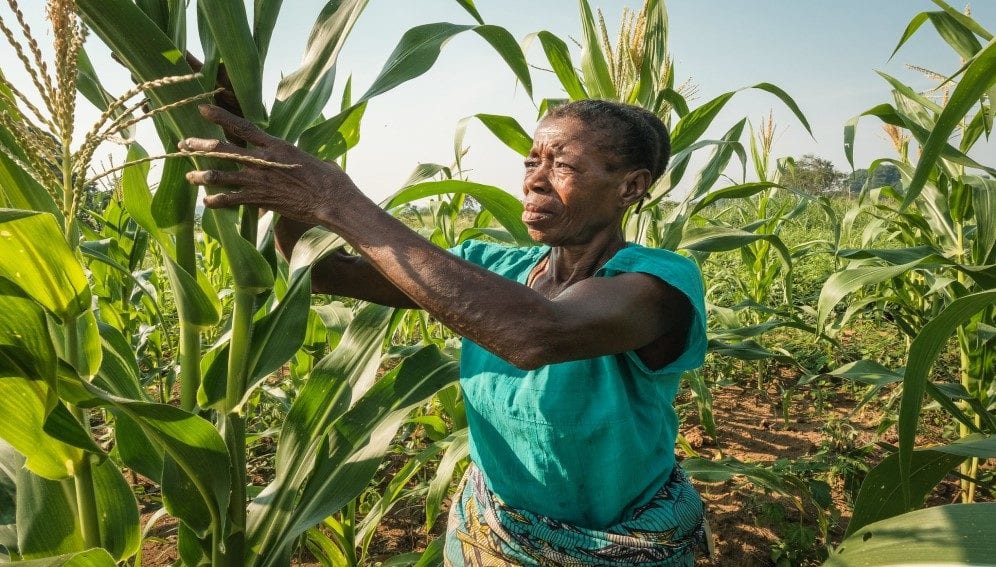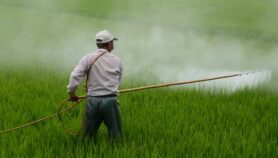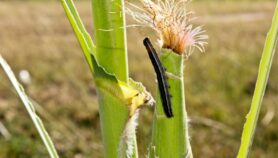07/04/21
Fall armyworm ‘worsens hunger among smallholders’

By: Onyango Nyamol
Send to a friend
The details you provide on this page will not be used to send unsolicited email, and will not be sold to a 3rd party. See privacy policy.
[NAIROBI] The invasive crop pest fall armyworm is well known for its devastating effects on maize yields in Africa, but few studies have been done on its broader impact on poverty levels and food security.
Now a study in Zimbabwe has found that smallholder maize-growing households blighted by fall armyworm are more likely to experience hunger and could see their income almost halved in severe cases, highlighting the urgency of strategies to tackle the pest.
“Our study suggests that the outbreak is threatening food security and negatively affecting farmers’ livelihoods, hence urgent actions are needed.”
Justice Tambo, CABI
According to the study, estimates from 12 maize‐producing countries in Sub-Saharan Africa including Benin, Cameroon, Ethiopia, Ghana, Malawi, Mozambique, Nigeria, Tanzania, Uganda, Zambia and Zimbabwe indicate that without control measures, the pest could cause maize losses of up to 17.7 million tonnes, translating into revenue loss of up to almost US$5 billion a year.
But researchers say that the negative impacts of the pest are far more than yield losses, with the potential to significantly impact food security and livelihoods.

The study, published in Food and Energy Security last month (15 March), shows that households affected by fall armyworm were 11 per cent more likely to experience food shortages, while their members had a 13 per cent higher likelihood of going to bed hungry or a whole day without eating. It also found that found that severe levels of infestation reduced per capita household income by 44 per cent.
“Our study suggests that the outbreak is threatening food security and negatively affecting farmers’ livelihoods, hence urgent actions are needed to address the menace posed by fall armyworm,” says Justice Tambo, the study’s lead author and a socio-economist at the Centre for Agriculture and Bioscience International (CABI, the parent organisation of SciDev.Net).



According to the study, fall armyworm was first reported in Zimbabwe during the 2016 and 2017 cropping season, and has continued to spread in subsequent seasons.
Researchers used survey data from 350 smallholder maize-growing households in six of Zimbabwe’s main maize production provinces. Data was collected in September 2018 by CABI in collaboration with Zimbabwe Plant Quarantine and Plant Protection Research Services Institute.



“We decided to conduct this study to provide evidence [of] how the fall armyworm outbreak is affecting farmers’ livelihoods beyond reductions in maize yields,” Tambo says. “While fall armyworm cannot be eradicated, taking actions to at least prevent severe level of infestation can significantly reduce welfare losses in terms of income and food security.”
Boddupalli Prasanna, director of the global maize programme at the International Maize and Wheat Improvement Center, tells SciDev.Net that fall armyworm is a serious concern to resource-constrained smallholders who have multiple challenges to tackle.
“We certainly need to provide effective, scalable and affordable technologies to the farming communities to combat the pest in a sustainable manner. Farmers cannot afford to rely on expensive chemical pesticides to and control fall armyworm,” says Prasanna, who was not involved in the study.
Prasanna adds that there is no single specific technology that can provide sustainable control of a pest like fall armyworm.
“We need to adopt an integrated pest management (IPM) strategy, including effective integration of improved varieties with resistance to the pest, environmentally safer pesticides, biological control … and good agronomic practices,” he says. “We need to [increase] extensive awareness among extension agents and farming communities about IPM strategy for the control of fall armyworm.”
According to Tambo, the findings have implications for policymakers, researchers and farmers. Farmers need to adopt low-risk pesticides products such as biopesticides, and combine them with safe non-chemical options including rotation and intercropping with other crops such as beans and cassava, he explains.
This piece was produced by SciDev.Net’s Sub-Saharan Africa English desk.
References
Justice A. Tambo and others Impact of fall armyworm invasion on household income and food security in Zimbabwe (Food and Energy Security, 15 March 2020)













